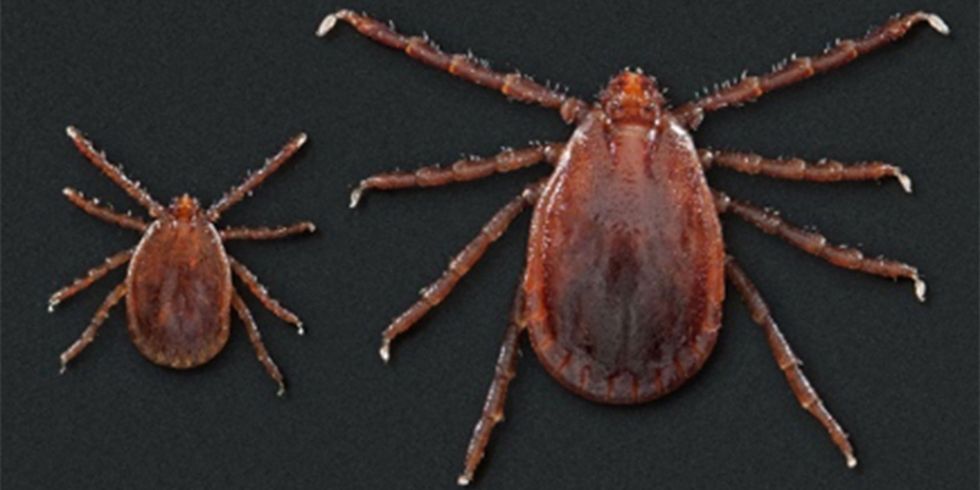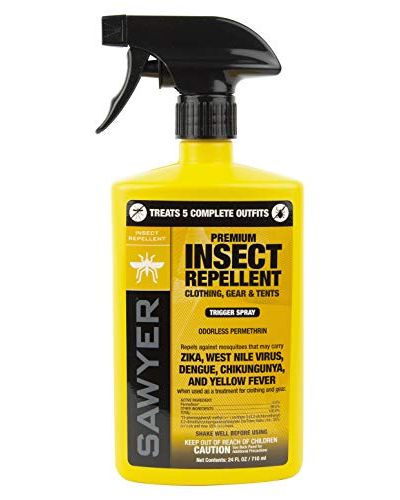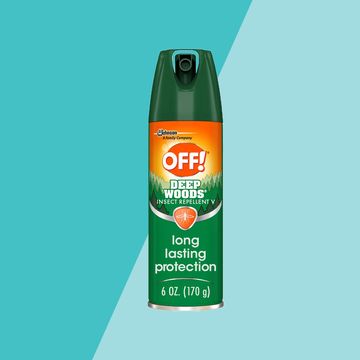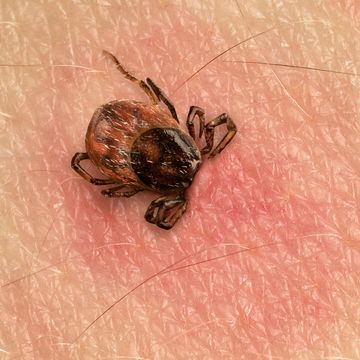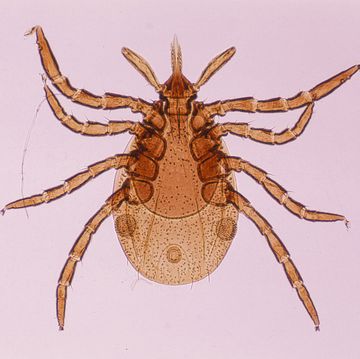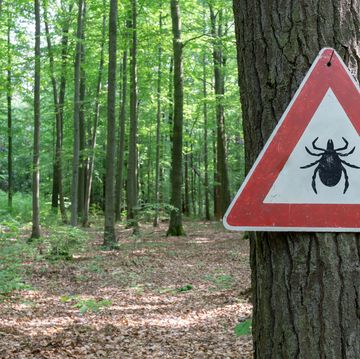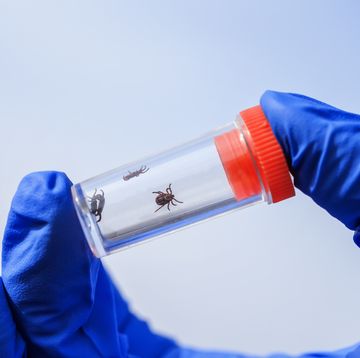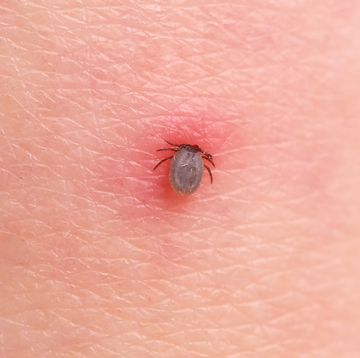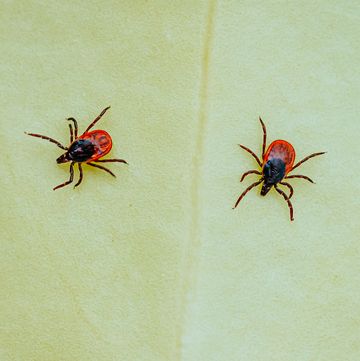- The invasive Asian longhorned tick has been discovered in Ohio. It was first identified in the U.S. in 2017 and has been slowly spreading since.
- The exotic species does not need a mate to reproduce.
- These ticks are a known threat to livestock, with more research needed to understand how they may impact humans.
An extremely tiny, invasive Asian longhorned tick—known for killing livestock and carrying disease-causing pathogens—has been discovered in Ohio. The tick was found on a stray dog in Gallia County, which was later sent to a nearby shelter, per officials with the Ohio Department of Agriculture (ODA). The tick was then sent to a federal lab, where the species was confirmed.
This tick was first identified in New Jersey in 2017 and can be found in typical tick habitats, such as grassy or wooded areas. So how did it get to a Midwestern state—and should you be worried? Below, everything we know so far about the Asian longhorned tick, how it impacts humans and animals, and what you can do to protect yourself.
What is the Asian longhorned tick, exactly?
The exotic pest is native to parts of Eastern Asia, but has since made its way to other countries including, Australia, New Zealand, and the United States, according to the Northeast Regional Center for Excellence in Vector-Borne Diseases (NEVBD). They’re brown in color, have eight legs, and are typically smaller than a sesame seed.
Asian longhorned ticks have been detected on animals, including pets and livestock, as well as people. However, the Centers for Disease Control and Prevention (CDC) says they aren’t as enticed by human skin.
Where can you find the Asian longhorned tick in the U.S.? Is the species spreading?
Since 2017, the Asian longhorned tick has been confirmed in Arkansas, Connecticut, Delaware, Kentucky, Maryland, New Jersey, New York, North Carolina, Ohio, Pennsylvania, Tennessee, Virginia, and West Virginia as of July 2020, per the CDC.
This recent Ohio discovery came just one week after it was also found in three Kentucky counties, per Local 12 WKRC-TV.
What’s startling about the Asian longhorned tick is the female does not need a male mate to reproduce—she does it all on her own. In fact, one female Asian longhorned tick can create up to 2,000 eggs over the span of two to three weeks following a “blood meal,” according to the Center for Wilderness Safety Inc’s Tick Safety program.
Are Asian longhorned ticks dangerous? Do they transmit disease?
Those blood meals can potentially be fatal to animals, Tony Forshey, D.V.M., the ODA’s state veterinarian, said in a press release. Asian longhorned ticks have the ability to spread theileriosis, a cattle disease that can cause symptoms of anemia and even death in the affected host. “This pest is especially fatal to livestock, so producers should practice preventative measures and be on the lookout for this new threat,” he said.
As for humans, that’s still up in the air. The CDC says one study found that the Asian longhorned tick is “not likely” to spread the bacteria responsible for Lyme disease, while another lab study found that it does have the ability to carry and transmit the bacteria associated with Rocky Mountain spotted fever. That said, more research is needed and the agency confirms that “the germs that cause Rocky Mountain spotted fever have not yet been found in these ticks in nature.”
How to protect yourself from ticks
There are a few ways you can protect yourself from any tick species, especially if you’re spending a lot of time in tick country (grassy, brushy, wooded areas):
- To keep ticks away from your home and out of your yard, follow these prevention strategies, which include landscaping tips for your property.
- Use a tick repellent that contains at least 20% DEET, IR3535, picaridin, or oil of lemon eucalyptus.
- Treat your clothing and gear (such as tents and backpacks) with 0.5% permethrin, an extremely effective insecticide that kills ticks.
- Always do a full-body check once you come back indoors. Pay close attention to areas with lots of folds, like under your arms, in your belly button, between your legs, and behind your knees. Then, take a shower.
- Wash your clothing immediately after being outdoors.
- Check your pets for ticks (and learn how to remove them from a dog or cat here).
- If you do find a tick on your body, follow this guide on how to remove it here.
If you suspect you have come into contact with an Asian longhorned tick, the CDC recommends contacting your local health department.
Like what you just read? You’ll love our magazine! Go here to subscribe. Don’t miss a thing by downloading Apple News here and following Prevention. Oh, and we’re on Instagram too.

